India Russia military exercise in 2025 aka ZAPAD, strengthens defense ties and challenges U.S.–China strategies. Explore its impact on India’s foreign policy, QUAD, BRICS, and multipolar world order.
Introduction: What does the India Russia military exercise reveal about shifting geopolitics?
The India Russia military exercise in 2025 is more than a routine drill. It highlights India’s delicate balancing act between strategic autonomy and competing global pressures from the U.S., China, and multilateral blocs.
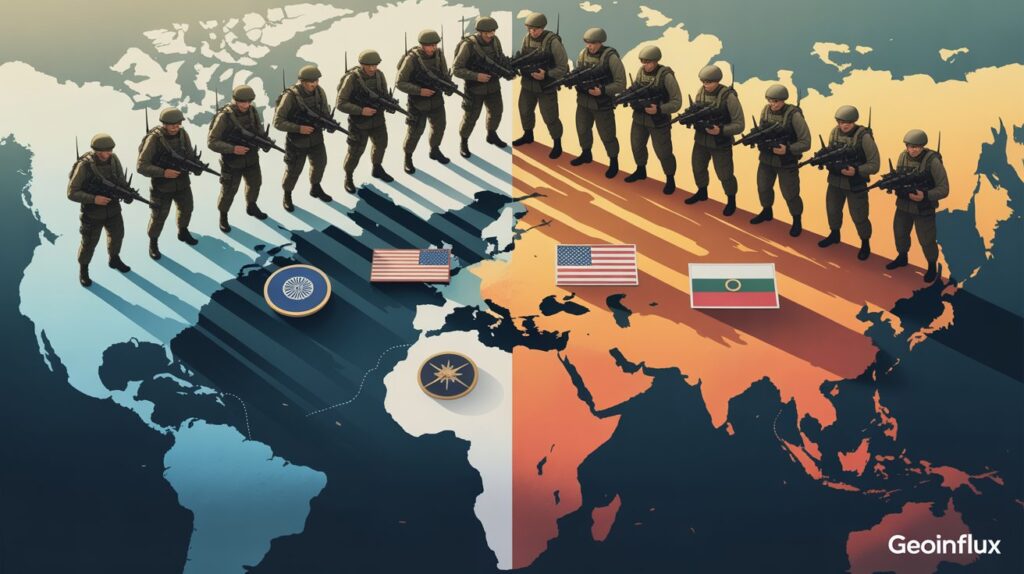
For Russia, the exercise signals enduring defense cooperation despite Western sanctions. For global powers, it raises urgent questions about whether India is quietly reshaping the multipolar order.
Why is the India Russia military exercise significant now?
The exercise comes at a time when:
- Western sanctions have isolated Russia, but they have also deepened Moscow’s reliance on its Asian partners.
- India is diversifying its defense portfolio but remains heavily reliant on Russian equipment (around 60% of its arsenal).
- The Ukraine war and U.S. sanctions are testing India’s ability to maintain strategic neutrality.
- China’s rise and border tensions with India have pushed New Delhi to strengthen multiple defense partnerships simultaneously.
This makes the exercise not just military training, but a geopolitical statement.
How does India Russia Military Exercise impact India–US relations and the QUAD?
For Washington, the drill is a reminder that India is not a treaty ally but a sovereign power with an independent playbook. While India is part of the QUAD (with the U.S., Japan, and Australia), it resists being drawn into an anti-China NATO-style framework.
- U.S. View: The Pentagon views India Russia defense ties with concern, fearing leaks of sensitive technologies. However, Washington also knows India is indispensable in balancing China.
- Indian View: New Delhi signals that QUAD cooperation does not mean abandoning traditional partners. By holding exercises with both Russia and QUAD states, India reinforces its multi-alignment strategy.
- Implication: Expect Washington to double down on defense tech offers (jet engines, drones, cybersecurity) to gradually reduce India’s reliance on Russia.
How is China reacting to India Russia Military Exercise?
China’s response is layered:
- Strategic Concern: Beijing dislikes India strengthening defense ties with Russia, since Moscow and Beijing are supposed to be in a “no-limits” partnership.
- Practical View: China knows Russia values India as a counterweight to overdependence on Beijing.
- Border Dynamics: The exercise indirectly strengthens India’s preparedness along the Himalayan front, something Beijing watches closely.
Thus, while China and Russia are partners, Moscow’s outreach to India ensures Beijing cannot monopolize Russian defense and energy cooperation.
Does this India Russia Military Exercise strengthen India’s strategic autonomy?
Yes. India has consistently maintained non-alignment 2.0 — refusing to take sides while building ties with competing blocs.
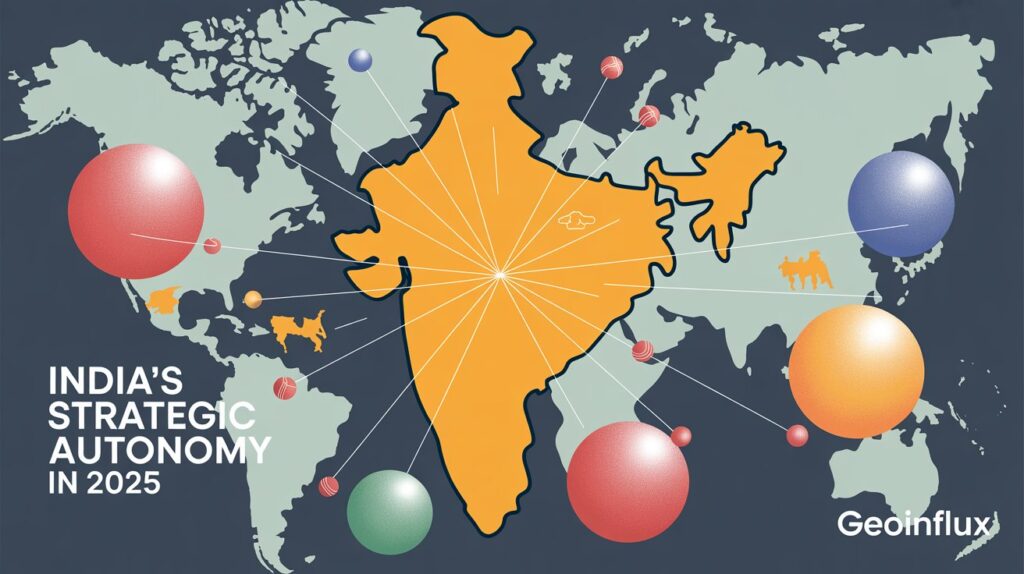
- With Russia, India secures discounted oil, advanced weaponry, and diplomatic cover at the UN.
- With the U.S. and QUAD, it gains technology, market access, and leverage against China.
- With BRICS and SCO, India shapes alternative economic frameworks.
The military exercise is proof that India is not abandoning Moscow despite Western pressure. Instead, it is using these engagements to assert that strategic autonomy remains non-negotiable.
What are the global trade and energy implications of India Russia Military Exercise?
Defense ties spill into energy and trade corridors:
- Oil & Gas: Russia remains India’s top oil supplier post-Ukraine war, with discounted barrels stabilizing India’s energy security.
- Arms & Technology: Joint defense production projects could bypass Western sanctions and create new supply chains.
- Trade Routes: Cooperation supports India’s participation in the International North-South Transport Corridor (INSTC), reducing dependency on Western-dominated routes.
This positions India as a bridge economy between sanctioned Russia and global markets.
What are the strategic implications for the multipolar world order?
The exercise reinforces that the unipolar U.S.-led order is weakening. Instead:
- Russia is pivoting East.
- India is refusing binary choices.
- China is both cooperating and competing with Moscow.
- The Global South is watching India as a model for balancing relations.
If sustained, India Russia defense cooperation will accelerate the rise of a multipolar Asia, where no single bloc dominates.
Recap Table: How does the India Russia exercise impact global powers?
| Actor | Impact of Exercise | Strategic Implication |
|---|---|---|
| India | Strengthens autonomy | Balances QUAD, Russia, BRICS |
| Russia | Secures Asian partner amid sanctions | Watches the Himalayan front closely |
| U.S. | Concerned but cautious | Pushes deeper tech deals with India |
| China | Wary of India–Russia closeness | Sees India as a balancing power |
| Global South | Alternative to the U.S.-China binary | Alternative to U.S.-China binary |
FAQs: What are the key questions around the India Russia military exercise?
1. Why is India still conducting military exercises with Russia despite U.S. sanctions?
India believes in strategic autonomy. It continues exercises with Russia because 60% of its military equipment is Russian-origin. Cutting ties would jeopardise defence readiness. Moreover, India balances this by also engaging in QUAD exercises, signaling that it will not be boxed into one camp.
2. Does this exercise weaken the QUAD?
Not directly. India uses QUAD for maritime security and balancing China, but refuses to treat it as a military alliance like NATO. The Russia exercise is simply another example of India’s multi-alignment policy.
3. How does Russia benefit from these exercises?
Russia gains legitimacy and shows it is not isolated despite Western sanctions. It also keeps its defense export market alive through India, diversifying away from overdependence on China.
4. Could this exercise escalate tensions with China?
China is cautious but not openly hostile. It recognizes that India and Russia have historic ties. However, Beijing will closely monitor whether the exercise involves sensitive Himalayan combat scenarios, which could tilt the border balance.
5. What does this mean for India’s long-term defense strategy?
India will likely diversify procurement (more U.S., French, indigenous systems), but Russia will remain a key partner in areas like S-400 air defense, nuclear submarines, and joint development projects. The exercise underlines India’s intent to maintain multiple options.
Related Articles: Where can I read more on India’s foreign policy?
- India Sides With Palestine at UN: Analysis of the New York Declaration
- India and the QUAD: Balancing China Without Burning Bridges
- India–Russia Trade in a Sanctioned World: Strategic Energy Deals Redefine Ties
References: What are the main sources for this analysis?
- The Hindu – India–Russia Defense Ties
- Carnegie Endowment – India’s Strategic Autonomy
- Reuters – India–Russia Oil Trade
- RAND Corporation – QUAD and Indo-Pacific Strategy


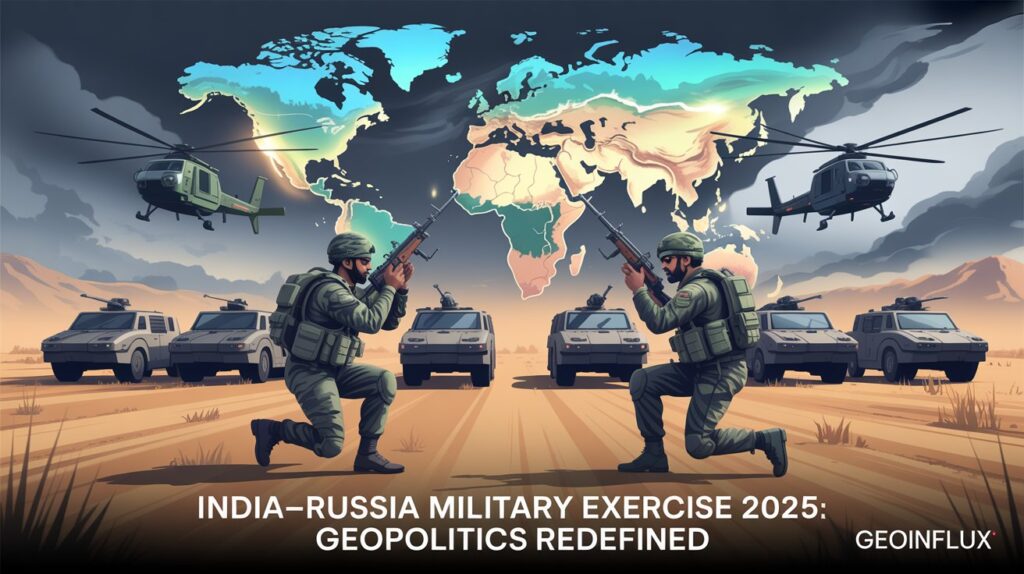
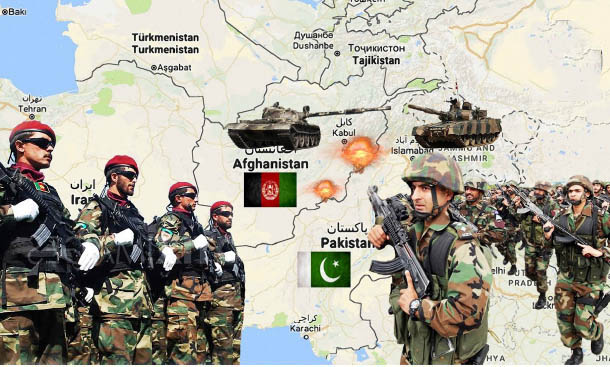
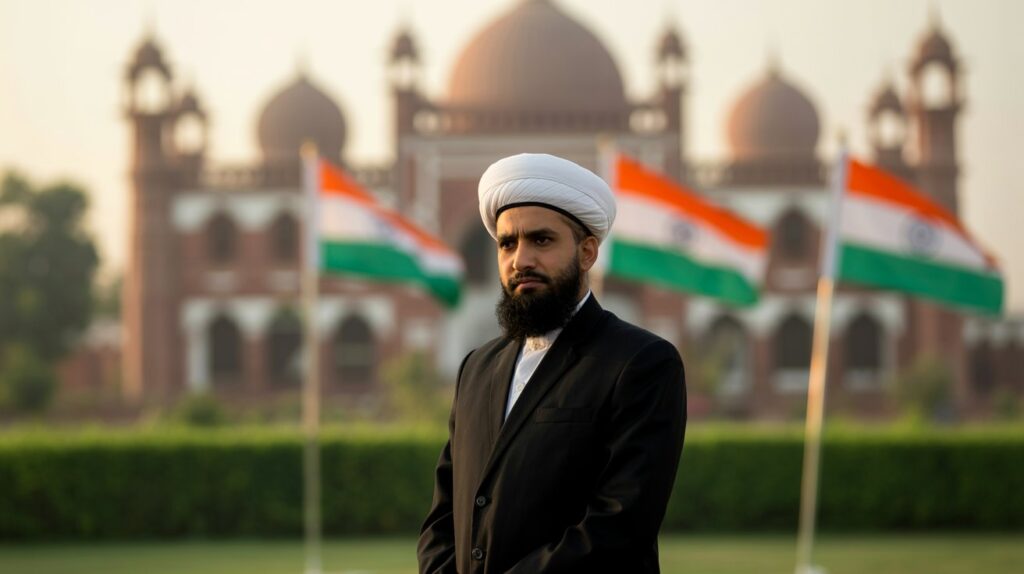

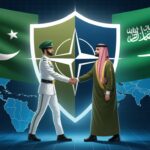

hi!,I like your writing so much! share we be in contact more about your article on AOL? I require a specialist in this area to solve my problem. May be that’s you! Having a look forward to peer you.